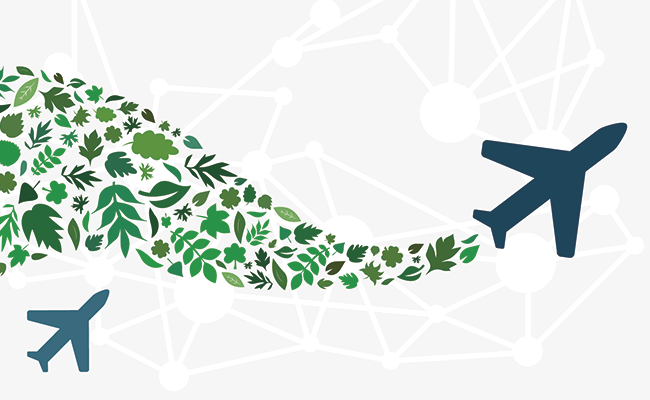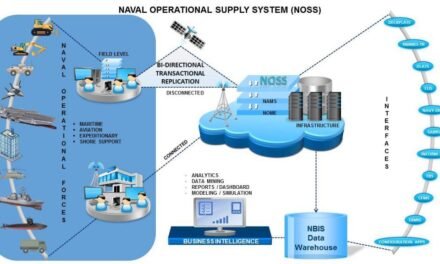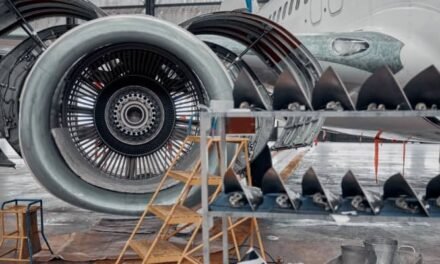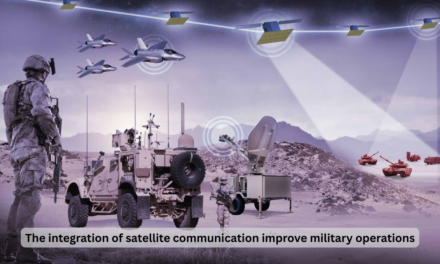Advanced Air Traffic Management (ATM) systems play a crucial role in reducing the carbon footprint of aviation by optimizing airspace utilization, improving fuel efficiency, and minimizing delays. By leveraging modern technologies and innovative practices, these systems enable airlines to reduce fuel consumption, emissions, and environmental impact while maintaining safe and efficient operations. Here’s how:
1. Optimized Flight Routes
1.1 Direct Routing
- Description:
- Advanced ATM systems provide aircraft with more direct routes, reducing the distance flown.
- Impact:
- Shorter flight paths decrease fuel consumption and CO₂ emissions.
- Examples:
- The Free Route Airspace (FRA) initiative in Europe allows airlines to plan the most efficient routes across participating airspaces.
1.2 Dynamic Airspace Management
- Description:
- Adjusting airspace configurations based on real-time traffic patterns to reduce congestion.
- Impact:
- Reduces fuel burn caused by holding patterns or route diversions.
2. Continuous Descent Operations (CDO)
- Description:
- Instead of stepwise descents, aircraft use a continuous, gradual descent profile to approach airports.
- Impact:
- Reduces fuel consumption, noise, and emissions during approach phases.
- Examples:
- Airports like Schiphol (Netherlands) and Heathrow (UK) have adopted CDO to improve sustainability.
3. Time-Based Flow Management (TBFM)
- Description:
- ATM systems manage aircraft arrival and departure sequences by assigning precise time slots.
- Impact:
- Reduces time spent in holding patterns and on taxiways, saving fuel and minimizing emissions.
- Examples:
- The NextGen TBFM system in the United States optimizes arrival times and reduces congestion at major airports.
4. Collaborative Decision-Making (CDM)
- Description:
- Airlines, airports, and air traffic controllers share real-time information to optimize operations.
- Impact:
- Enhances coordination, minimizes delays, and ensures efficient fuel usage.
- Examples:
- The Airport Collaborative Decision-Making (A-CDM) initiative is implemented across Europe to improve turnaround efficiency.
5. Enhanced Navigation Technologies
5.1 Performance-Based Navigation (PBN)
- Description:
- Uses GPS and satellite navigation systems for precise route planning.
- Impact:
- Enables optimal flight paths, reducing fuel consumption and emissions.
- Examples:
- RNAV (Area Navigation) and RNP (Required Navigation Performance) procedures are increasingly used in terminal airspaces.
5.2 Reduced Vertical Separation Minimum (RVSM)
- Description:
- Allows aircraft to fly closer together vertically, optimizing available airspace.
- Impact:
- Enables more aircraft to fly at fuel-efficient altitudes, reducing emissions.
6. Fuel-Efficient Ground Operations
6.1 Reduced Taxi Times
- Description:
- Advanced ATM systems optimize taxiing routes and reduce ground delays.
- Impact:
- Minimizes fuel burned while taxiing.
- Examples:
- Surface Management Systems (SMS), such as those implemented at JFK and LAX, enhance ground movement efficiency.
6.2 Single-Engine Taxiing
- Description:
- Encouraging aircraft to use only one engine during taxiing operations.
- Impact:
- Reduces fuel consumption and emissions during ground operations.
7. Flexible Use of Airspace (FUA)
- Description:
- Military and civilian airspace users collaborate to allow shared use of restricted areas when not in use by the military.
- Impact:
- Opens up more direct routes for civil aviation, reducing detours and fuel burn.
- Examples:
- Europe’s Flexible Use of Airspace policy under the Single European Sky (SES) initiative.
8. Digital and Predictive Technologies
8.1 Artificial Intelligence (AI) in ATM
- Description:
- AI analyzes traffic patterns, weather, and other variables to optimize airspace usage.
- Impact:
- Enables proactive management of congestion and reduces delays and emissions.
8.2 Digital Twins
- Description:
- Virtual models of air traffic systems simulate and predict traffic flows.
- Impact:
- Enhances decision-making and ensures efficient flight operations.
9. Weather Optimization
- Description:
- Advanced ATM systems incorporate real-time weather data for more accurate flight planning and routing.
- Impact:
- Avoids unnecessary diversions and reduces emissions caused by turbulence or poor weather.
- Examples:
- Systems like SESAR’s Integrated Weather Solution provide actionable weather intelligence.
10. Real-Time Traffic Management
10.1 Traffic Flow Optimization
- Description:
- Dynamic allocation of flight slots and airspace capacity to balance demand.
- Impact:
- Reduces airborne holding and departure delays.
- Examples:
- FAA’s NextGen Traffic Flow Management System enhances traffic predictability.
10.2 UTM for Urban Air Mobility
- Description:
- Unmanned Traffic Management (UTM) systems integrate drones and urban air mobility (UAM) vehicles with traditional air traffic.
- Impact:
- Ensures efficient airspace usage, avoiding congestion and reducing emissions.
11. Noise and Emission Optimization
- Noise Abatement Procedures:
- ATM systems ensure optimized departure and arrival paths to reduce noise and emissions near populated areas.
- Green Corridors:
- Dedicated low-emission routes designed for minimal environmental impact.
12. Integration of Electric and Hybrid Aircraft
- Description:
- ATM systems adapt to accommodate emerging electric and hybrid aircraft.
- Impact:
- Facilitates sustainable aviation by supporting quieter, cleaner aircraft operations.
13. Collaborative Initiatives
13.1 SESAR (Europe)
- Single European Sky ATM Research aims to create an integrated ATM system in Europe to optimize airspace usage and reduce emissions.
13.2 FAA NextGen (USA)
- Modernizing the U.S. National Airspace System with technologies like TBFM and PBN for efficient air traffic.
13.3 CORSIA
- ICAO’s Carbon Offsetting and Reduction Scheme for International Aviation integrates ATM efficiency improvements with carbon reduction goals.
14. Quantifiable Benefits
- Fuel Savings:
- Efficient ATM systems save millions of gallons of fuel annually.
- Emission Reductions:
- A well-implemented ATM system can reduce CO₂ emissions by up to 10–12%.
- Example:
- SESAR claims its initiatives could save up to 500,000 tons of CO₂ annually in Europe.
Conclusion
Advanced Air Traffic Management (ATM) systems are transforming aviation sustainability by optimizing flight operations, enhancing efficiency, and reducing fuel consumption and emissions. These systems play a pivotal role in achieving the aviation industry’s long-term decarbonization goals and align with global efforts to combat climate change. Continued innovation and collaboration among stakeholders will be crucial to realizing their full potential.
Hashtags
#AdvancedATMSystems #SmartAirTrafficManagement #ModernATMTech #EfficientFlightOperations #NextGenAirTraffic #ReducingCarbonFootprints #EcoFriendlyAviation #CarbonReductionInFlight #LowCarbonAviation #GreenFlightManagement #SustainableAirTraffic #OptimizedFlightPaths #FlightPathOptimization #EfficientRoutingTech #ShorterFlightRoutes #DirectFlightManagement #FuelEfficientAirspace #TechnologicalInnovations #AIInATMSystems #DigitalATMTech #SmartAviationSolutions #NextGenFlightTech #InnovativeAirTrafficSystems













